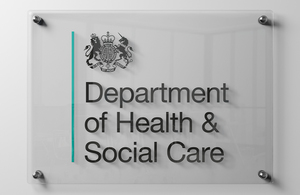Statistical press notice: NHS diagnostics waiting times and activity data - February 2013
Diagnostics waiting times and activity – February 2013

Diagnostics waiting times and activity – February 2013
Data are published on waiting times and activity for 15 key diagnostic tests for the month of February 2013. The key points are:
-
at the end of February 2013, there were 660,000 patients still waiting for one of 15 key diagnostic tests, and of these 5,817 were waiting 6 weeks or over from referral. The number waiting 6 weeks or longer shows a decrease of 2,500 from January 2013 and an increase of 250 from February 2012.
-
the 5,817 waiting over 6 weeks or longer represents 0.9% of all patients waiting for a test. This compares to 1.3% at the end of January 2013 and 0.9 % at the end of February 2012.
-
in total, 1,358,000 of the 15 key diagnostic tests were performed during February 2013, which is an increase of 24,000 (1.8%) on the same period last year. Year to date figures for 2012/13 show a 6.8% rise on 2011/12.
-
tables 1 and 2 show latest figures on waiting times and activity by test. Table 3 and Graph 1 show trends in waiting times for diagnostic tests. These tables and graphs can be found in the full statistical press notice published on the NHS England website
-
figures for this month exclude Barts Health NHS Trust, who did not provide the required information due to technical reasons.
Detailed tables by provider and commissioner can be found via the following on the NHS England website
Statistical Notes
1.Diagnostic waiting times
Diagnostics data is collected from NHS providers (NHS Trusts and other providers) and signed off by commissioners (Primary Care Trusts).
The data measures current waiting times of patient still waiting at the end of the month. This information is split by number of weeks waiting, and by test.
The waiting times reported are for those patients who have been referred for a test, but whose test had not taken place by the end of the reporting period.
Data was first published in May 2006, and is available for each month from January 2006 to date.
The six week diagnostic wait was initially introduced as a ‘milestone’ from march 2008 towards achieving the standard Referral to Treatment wait of 18 weeks by December 2008.
The NHS Operating Framework 2012/2013 introduced and expectation that less than 1 per cent of patients should wait six weeks or longer for a diagnostic test. This publication also measure progress against the standard.
The NHS Commissioning Board’s planning guidance for 2013/14 reflects the consulted position, setting out that assessments of organisational delivery will include a threshold that 99% of patients should have been waiting less than 6 weeks for a diagnostic test. The financial penalty for non-delivery of the standard is set out in the draft NHS Standard Contract 2013/14.
2.Provider and Commissioner based data
England figures quoted are commissioner based. Commissioner based returns reflect data for patients for whom English commissioners are responsible. This is defined as:
-
all those patients resident within the PCT boundary; plus
-
all patients registered with GPs who are members of the PCT, but are resident in another PCT; minus
-
all patients resident in the PCT, but registered with a GP who is a member of another PCT
Provider based returns cover patients treated in organisations in England.
3.Average (median) waiting times
The median is the mid-point of the waiting times distribution (i.e. the 50th percentile) and can be interpreted by saying that 50% of all patients have waited this amount of time.
It should be noted that medians are calculated from aggregate data, rather than patient level data, and therefore are only estimates of the position on average waits.
4.Interpretation of waiting times and activity data
Care should be taken when making month on month comparisons of these figures. Measures of waiting time performance are subject to seasonality. For example, the presence of bank holidays, or the number of weekends, in a calendar month affect the number of working days. Similarly, adverse weather may result in emergency pressure and impacts upon the health service’s ability to preserve elective capacity. These factors can affect waiting times and should be considered when making comparisons across time.
5.Feedback welcomed
We welcome feedback on the content and presentation of statistics within this Statistical Press Notice and those published on the DH website. If anyone has any comments on this, or any other issues regarding these statistics, then please email unify2@dh.gsi.gov.uk
Additional Information
Full details of diagnostics data for individual organisations is available on the NHS England website
To contact the Media Centre, please refer to the Department of Health website
The Government Statistical Service (GSS) statistician responsible for producing these data is:
Mark Svenson NHS Operations NHS England Room 8E10, Quarry House, Quarry Hill, Leeds LS2 7UE Email: unify2@dh.gsi.gov.uk